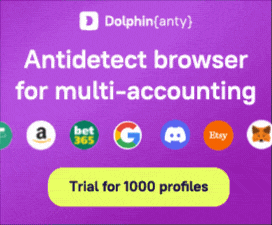What is Social Media Optimization ( SMO) ?
- Thread starter Tommy
- Start date
- Joined
- Jul 7, 2012
- Messages
- 845
- Points
- 63
As a way of optimizing your website by linking and connecting to websites via communities to share ideas, thoughts or experiences... SMO method often used is used to RSS feeds (RSS feeds is one way to use regular news updates, constantly .. like blogs, ...)
In addition, it can also be associated with a number of other tools such as: YouTube to share video, or photo sharing Flickr, the album ... to create attractiveness to attract regular readers access to the address and consider it as a familiar address.
The SMO is divided into two main groups:
Group 1: the social media tools (on the website) was added to the main article: RSS feeds, news sources, the share button, users voted images, video of the company.
Group 2: the promotion through social media separate from the content being promoted, including: blog posts, post comments on other blogs, participating in social groups, update status message on the profile in the social network.
SMO related to Marketing (through) search engine - SEM, but the difference is that it focuses navigation traffic (website) from sources other than search engines. However, the improvement of the ranking (of the returned results) search is also beneficial for the success of the SMO.
SMO is technically connected in many different ways to potato marketing communication - from word of mouth not only through relationships friends and family, but also through social markers (social bookmarking), the photo sharing website photos and video clips. SMO has a similar connection with the blogs attached to sharing content through the use of RSS in the blog environment and search engine dedicated to blogs.
Social Media Optimization is considered an integral part of online reputation management (ORM) or reputation management strategy (through) search engine (SERM) for the organization and individuals concerned about the presence (face) on their network.
SMO is not limited in the field of marketing and branding. More businesses are wise to participate in integrated social media as part of their knowledge management strategy (for example: development of services / products, recruiting, motivating employees, revenue , branding, expanding customer relationships and satisfaction, business development, etc.)
In addition, it can also be associated with a number of other tools such as: YouTube to share video, or photo sharing Flickr, the album ... to create attractiveness to attract regular readers access to the address and consider it as a familiar address.
The SMO is divided into two main groups:
Group 1: the social media tools (on the website) was added to the main article: RSS feeds, news sources, the share button, users voted images, video of the company.
Group 2: the promotion through social media separate from the content being promoted, including: blog posts, post comments on other blogs, participating in social groups, update status message on the profile in the social network.
SMO related to Marketing (through) search engine - SEM, but the difference is that it focuses navigation traffic (website) from sources other than search engines. However, the improvement of the ranking (of the returned results) search is also beneficial for the success of the SMO.
SMO is technically connected in many different ways to potato marketing communication - from word of mouth not only through relationships friends and family, but also through social markers (social bookmarking), the photo sharing website photos and video clips. SMO has a similar connection with the blogs attached to sharing content through the use of RSS in the blog environment and search engine dedicated to blogs.
Social Media Optimization is considered an integral part of online reputation management (ORM) or reputation management strategy (through) search engine (SERM) for the organization and individuals concerned about the presence (face) on their network.
SMO is not limited in the field of marketing and branding. More businesses are wise to participate in integrated social media as part of their knowledge management strategy (for example: development of services / products, recruiting, motivating employees, revenue , branding, expanding customer relationships and satisfaction, business development, etc.)
fab
New member
- Joined
- Nov 16, 2012
- Messages
- 44
- Points
- 0
Yes SMO is most effective weapons nowadays in promoting business services over Web . SMO BenifiteSocial media optimization is a great techniques by which you can get more traffic and business for the website but to do it efficiently you need what factors ? and how to do ?
Comments would be appreciated !
Cost effective and Increases organic traffic .
Also Gets you the benefit of back-links
Helpful with popularity or Brand awareness .
AdamJack
New member
- Joined
- Jan 15, 2013
- Messages
- 8
- Points
- 0
SMO is the technique to get a lot of traffic for your website with the help of social networking sites like Facebook,Twitter,LinkedIn.Today each and everyone is using these sites.In that way you can create your own circle to share your products and services of your organization with your friends and followers to increase sale.
markdavid
New member
- Joined
- Dec 5, 2012
- Messages
- 13
- Points
- 0
Social media optimization play the major role in creating a online presence for any types of business.
Increasing friends and followers of your business page on social networking sites. Sharing creative and interesting content and images engage users attention on your posts and leave the unforgettable prints on visitor mind.
Increasing friends and followers of your business page on social networking sites. Sharing creative and interesting content and images engage users attention on your posts and leave the unforgettable prints on visitor mind.
tayloralina
New member
- Joined
- Mar 11, 2013
- Messages
- 40
- Points
- 0
Social media optimization is a new era of location-based services and marketing, and "Places" check-ins on sites like Facebook and Foursquare. By allowing users to check in at places, and have them geo-tagged sites on their smart phones, you can see not only where people are, but what they do, and how shopping and spend their time on brands and products. This is a very attractive thing for marketers to use, and it comes only through social media optimization comprehensive and best practices.
Older threads
- Replies
- 4
- Views
- 3,459
- Replies
- 8
- Views
- 3,646
Newer threads
- Replies
- 10
- Views
- 6,139
- Replies
- 2
- Views
- 2,999
- Replies
- 1
- Views
- 3,501
Latest threads
- Replies
- 1
- Views
- 1,033
Recommended threads
- Replies
- 2
- Views
- 2,372
- Replies
- 0
- Views
- 2,095
Similar threads
- Replies
- 2
- Views
- 3,676
- Replies
- 49
- Views
- 14,299
- Replies
- 3
- Views
- 3,838
- Replies
- 5
- Views
- 2,905
Latest postsNew threads
-
New threads
-
-
-
Nice traffic hack and DR80+ links
- Started by KeywordMarketingPro
- Replies: 1
-
Referral contests
-
Refer Your Friends to WebmasterSun to Win Cash and Prizes!
$100 to your Paypal
View details
300 Trophy Points
1 banner ad 728x 90
Referral link for :








